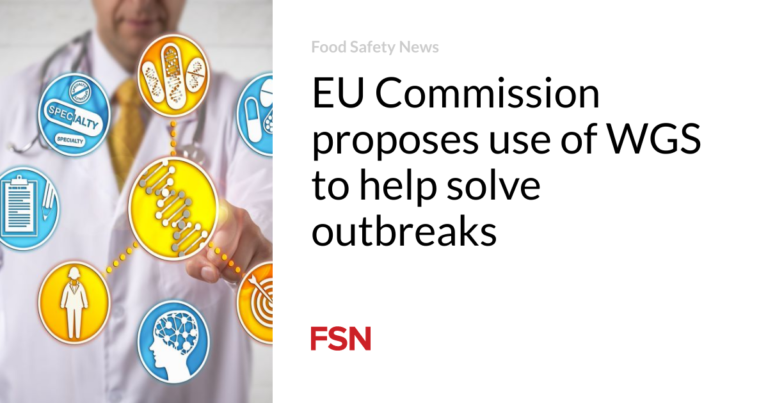The European Commission has proposed legislation that would require EU countries to carry out whole genome sequencing (WGS) in the event of a foodborne illness outbreak.
Officials said the plan will make it easier to investigate the spread of the virus and find its source early, limiting the number of infected people and the need to recall and remove food.
Member States are required to collect Salmonella, Listeria, Escherichia coli, Campylobacter jejuni and Campylobacter coli isolates from food, animals, feed and relevant environmental samples during industry and official controls if any isolate is suspected to be linked to a foodborne outbreak, and must perform WGS on those isolates.
EU countries will send the relevant results to the European Food Safety Authority (EFSA), which developed the One Health WGS system in collaboration with the European Centre for Disease Prevention and Control (ECDC).
EFSA will be able to compare the WGS results on isolates collected in accordance with regulatory requirements with the findings of the WGS on human isolates communicated to ECDC, which will enable EFSA to identify the source of the outbreak and the affected cargoes.
The draft is open for comments
Under current regulations, authorities in the Member States concerned must investigate foodborne illness outbreaks, but the manner in which they do so is not precisely defined. The aim is to provide data on the epidemiological profile, the foods possibly implicated and the potential causes.
In 2022, there were 5,763 cases of food poisoning in the EU. The number of deaths from food poisoning was the highest in the past 10 years. Salmonella was the most common food poisoning, followed by norovirus cases.
Collaboration between public health and food safety authorities in these investigations is critical to limiting the health hazards associated with any outbreaks and minimizing the economic impact of recalling or removing potentially unsafe foods.
Whole-genome sequencing can identify microbial clusters and aid in epidemiological investigations, and can also establish relatedness among isolates of foodborne pathogens recovered from humans, food, animals, feed, and associated environments during outbreak investigations.
Due to the time required to adapt to the new rules, as well as technical and financial considerations, the regulations will not go into effect until 18 months after the proposed rules are finalized.
In its 2019 report, the ECDC noted that the pace of change in WGS varied by pathogen and by European country, but the number of countries using WGS-based classification for routine surveillance of at least one human pathogen increased from zero in 2013 to 20 in 2017.
What is your feedback on the EU Commission’s proposal? Submissions due by September 18th.
(To sign up for a free subscription to Food Safety News, click here.



